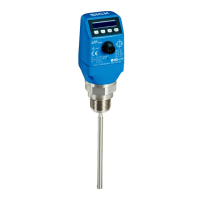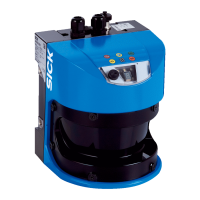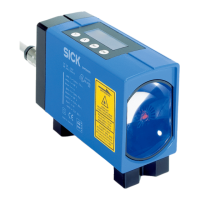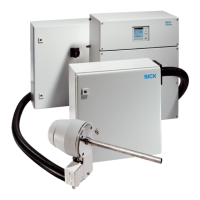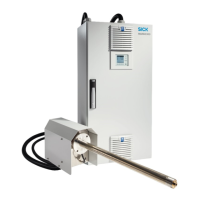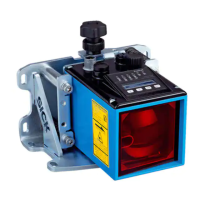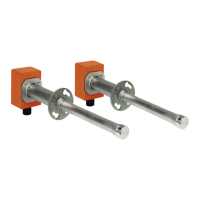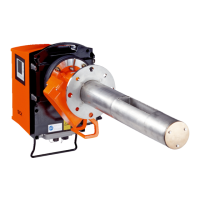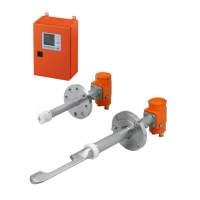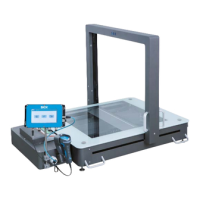
Do you have a question about the SICK Lector85x and is the answer not in the manual?
| Brand | SICK |
|---|---|
| Model | Lector85x |
| Category | Measuring Instruments |
| Language | English |
Explains the purpose and prerequisites for using the manual for safe operation.
Details warning symbols, signal words, and their meanings used throughout the document.
Lists other relevant documents and technical information from SICK for the product.
Directs users to the product page for additional details, resources, and downloads.
Describes the product's purpose, application areas, and design for industrial environments.
Outlines incorrect usage scenarios, limitations, and potential hazards associated with misuse.
Discusses the importance of a comprehensive cybersecurity concept for product protection.
Explains manufacturer's liability based on adherence to documentation and correct usage.
Warns against unauthorized changes to the device or software and their warranty implications.
Details the necessary qualifications and training for personnel handling the device.
Covers specific operational risks, including optical radiation and hot device surfaces.
Describes different product configurations and assembly options for various applications.
Lists the components included in the standard delivery of the product.
Explains the information contained on the product's identification type label.
Details the structure and meaning of the product's type code for identification.
Provides a visual overview and identifies the key components and connection points of the device.
Describes the integrated illumination unit, its LEDs, and feedback functions.
Explains the function and status indications of the device's LEDs.
Illustrates the device's working distance, depth of field, and field of view.
Provides guidelines for safe packaging and handling during product transport.
Instructions for carefully unpacking the device to prevent damage and condensation.
Steps for checking the delivery for completeness and any transit damage.
Recommendations for proper storage conditions to maintain product integrity.
General guidance and precautions for mounting the device safely and correctly.
Detailed steps for physically attaching the lens and illumination unit to the device.
Procedures for mounting the device onto suitable equipment using screws or sliding nuts.
Provides general guidelines and precautions for correctly wiring the device.
Details crucial safety requirements for electrical connections, grounding, and equipotential bonding.
Details connector types, pin assignments, and signal information for various interfaces.
Information on available network services and ports for device configuration and access.
General guidance on connecting the product, including electrical and diagrammatic steps.
Instructions for launching and accessing the SOPASair software for device operation.
Covers assigning, changing, and resetting passwords to protect device settings.
Information on using the SOPAS ET software for parameter management and configuration.
Methods for manually and automatically backing up parameter sets to external storage.
Details regarding the use of the integrated microSD card slot for storage.
Procedures for safely inserting and removing the memory card from the device.
Instructions for permanently saving device parameters within SOPASair and externally.
Steps for updating the device's firmware using the SICK AppManager software.
Outlines preventive maintenance tasks, intervals, and responsibilities for the device.
Provides procedures for cleaning the device's viewing window and housing.
Lists common faults, error situations, and initial corrective actions.
Guidance on using SOPASair features for device diagnostics and fault analysis.
Information regarding repair procedures, authorized personnel, and warranty implications.
Guidelines and necessary information for returning the device to SICK Service.
Step-by-step instructions for safely disconnecting and removing the device.
Procedures for installing, configuring, and operating a replacement device.
Environmental guidelines for disposing of the device in accordance with regulations.
Lists the main technical features, application areas, and sensor specifications.
Details physical dimensions, materials, electrical safety, and weight specifications.
Provides technical drawings illustrating the device structure and dimensions in mm/inch.
Information on readable code structures, types, and qualification standards.
Describes supported communication interfaces, protocols, and data transmission rates.
Specifies environmental conditions including EMC, vibration, shock resistance, and temperature.
Visual representations of the device's perceived field of view area at different working distances.
Information on available accessories and related installation information for the product.
Information on how to download declarations of conformity and certificates for the product.
Details regarding the software licenses, including open-source components used.
